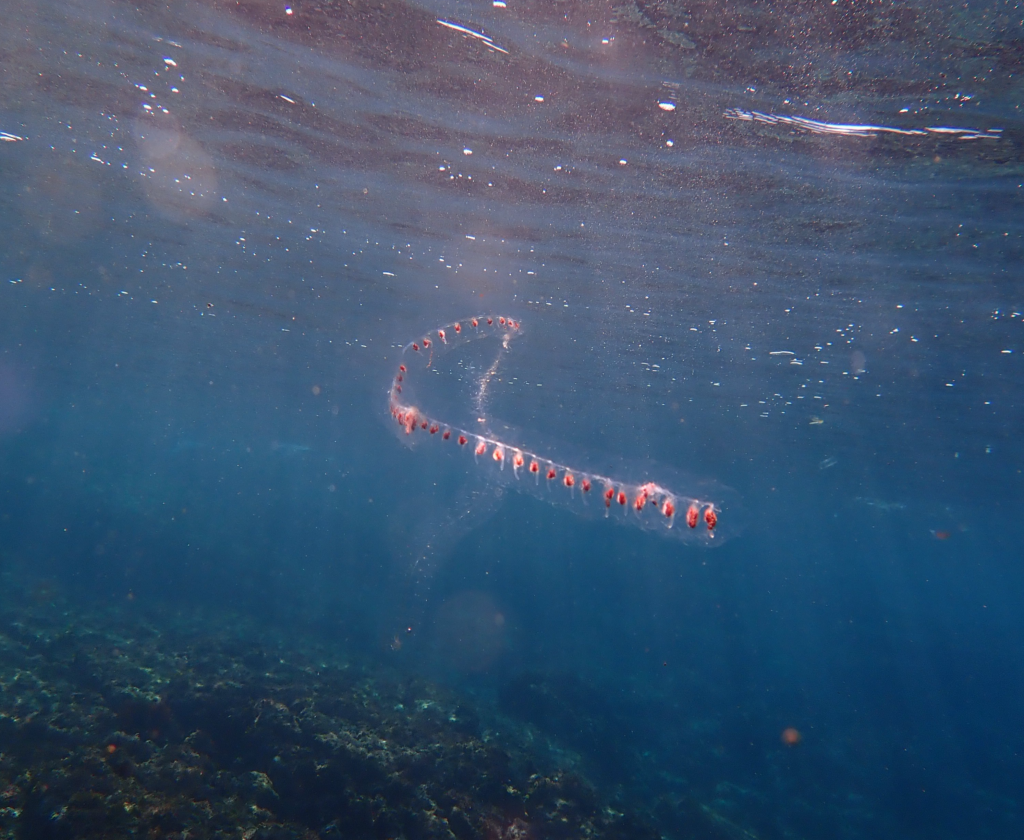1. Evolution of Life History Traits in Animals (Dr. Miura)
2. Developmental and Evolutionary Mechanisms of Phenotypic Plasticity (Dr. Miura)
3. Caste or Zooid Differentiation in Eusocial and Colonial Animals (Dr. Miura)
4. Exploring the Origin of Bilaterians (Dr. Miura)
5. Molecular Mechanisms of Sperm Activation and Chemotaxis during Fertilization (Dr. Yoshida)
6. Regulatory Mechanism of Fertility in Mammalian Sperm (Dr. Yoshida)
7. Studies on Development and Evolution using Teleosts (Dr. Kurokawa)
8. Colony Formation Mechanism of Siphonophore (Dr. Oguchi)
1. Evolution of Life History Traits in Animals (Dr. Miura) For more information, click here.
Animals adapt their life histories by changing various traits in response to environmental conditions. We are investigating the developmental systems used to modify the morphology of a wide variety of animal taxa during their life histories using histomorphological observations and molecular embryological analysis. We are also trying to understand how these life history traits have been acquired and upgraded during animal evolution by using comparative genomics and transcriptomics. Specific topics include: “Developmental mechanisms of stolonization, a unique reproductive mode in the annelid Polychaeta”, “Embryological origins of pentaradial symmetry in echinoderms”, “Development and evolution of suckers in cephalopods”, “Developmental basis and adaptive significance of the unique body plan in the phylum Echinodermata”, and “Mechanisms of terrestrial expansion in isopods”.

2. Developmental and Evolutionary Mechanisms of Phenotypic Plasticity (Dr. Miura)) For more information, click here.
Phenotypic plasticity, which is the ability to flexibly change traits in response to environmental conditions, plays an important role in biological evolution, and some taxonomic groups show distinctive phenotypic plasticity or polyphenism. Especially in insects, caste polyphenism in social insects, life history polymorphism in aphids, and mandibular polymorphism in stag beetles are known, and their physiological developmental mechanisms have been clarified one after another. In addition to these studies in insects and other arthropods, we are currently investigating the mechanisms of sex change in fishes in response to environmental conditions, in an attempt to discover the mechanisms and evolutionary roles of plasticity common to a wide range of animals.
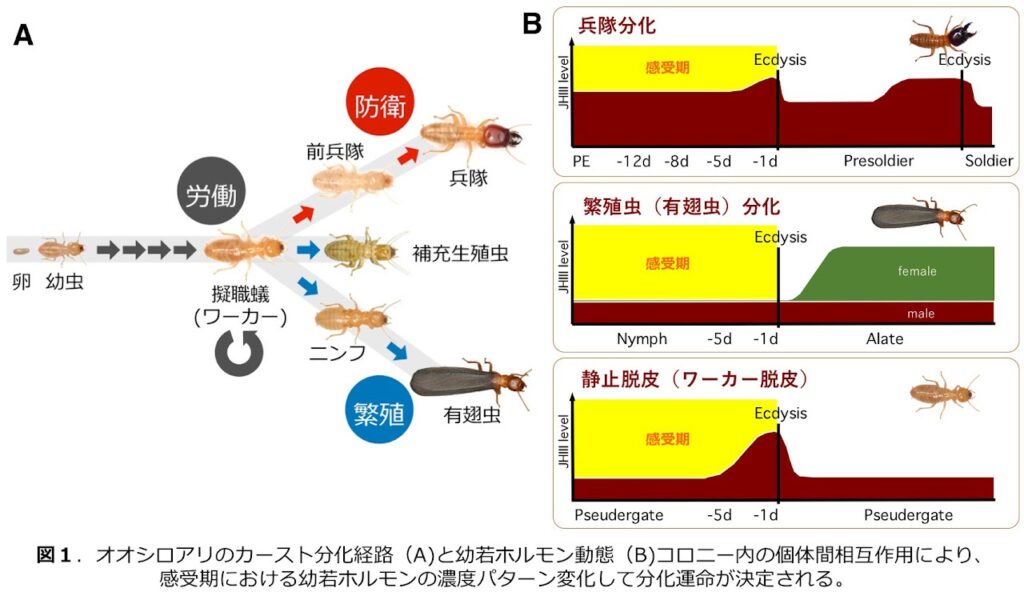
3. Caste or Zooid Differentiation in Eusocial and Colonial Animals (Dr. Miura) For more information, click here.
In social insects, which exhibit eusociality, and marine colonial animals, there are castes or zooids that have different characters and play different roles within the same-species colony. These polymorphisms are also considered to be a type of phenotypic plasticity, and it is thought that different phenotypes are induced by modifications of developmental programs during individual development. We are focusing on termites, a eusocial insect, and the bryozoans, a typical lineage of colonial animals, to establish experimental systems for rearing from colonies collected from the field and for inducing different phenotypes under rearing conditions, in order to examine what kind of developmental modifications work and how they have been acquired through evolution. In addition, we are trying to understand the evolutionary significance of such developmental modifications.
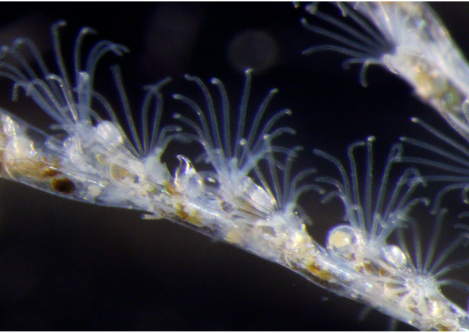
4. Exploring the Origin of Bilaterians (Dr. Miura) For more information, click here.
How bilaterians evolved during the early evolution of animal kingdom still remains a mystery. Recently, it has become clear that the phylum Xenacoelomorpha, which includes acoels, is the most basal taxon among bilaterian phyla. The environments around MMBS are excellent because many marine invertebrates including acoels can be collected and some acoel species can be easily maintained in the laboratory. We have focused on several species of acoel species to observe their developmental and reproductive patterns in detail, and to study what physiological and developmental mechanisms they have acquired. Based on these findings, we are attempting to deepen our understanding of how bilaterians have evolved and diversified.
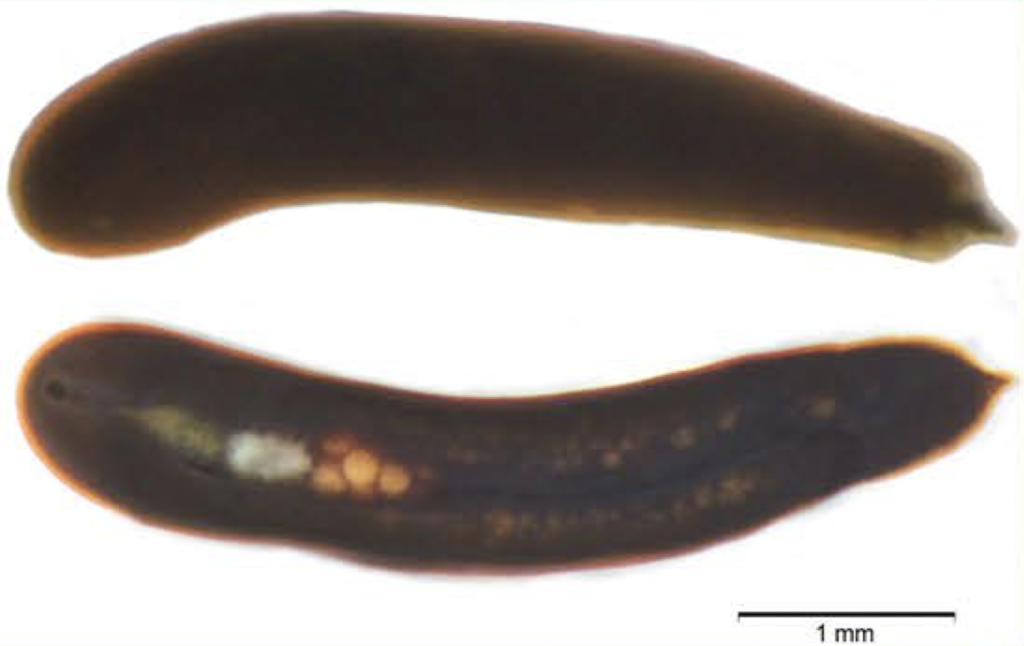
5. Molecular Mechanisms of Sperm Activation and Chemotaxis during Fertilization (Dr. Yoshida) For more information, click here.
In many animals, spermatozoa are attracted to an egg during fertilization, and the sperm chemotaxis plays an important role in the sperm finding the egg of the same species. We have identified the sperm-activating and attracting factors (SAAFs) in ascidians, and clarified the structural differences between them. Furthermore, we found that the Ca2+ pump (PMCA) in the sperm membrane acts as a receptor for the SAAF. In this study, we are clarifying the mechanism by which the spermatozoa sense negative concentration changes, such as a decrease in the attractant. Now, we are investigating that the mechanism of Ca2+-induced regulation of the flagellar waveform in order to understand the regulatory system of sperm motility. We are also studying the molecular mechanism of sperm motility in marine teleosts initiated by osmolarity change.
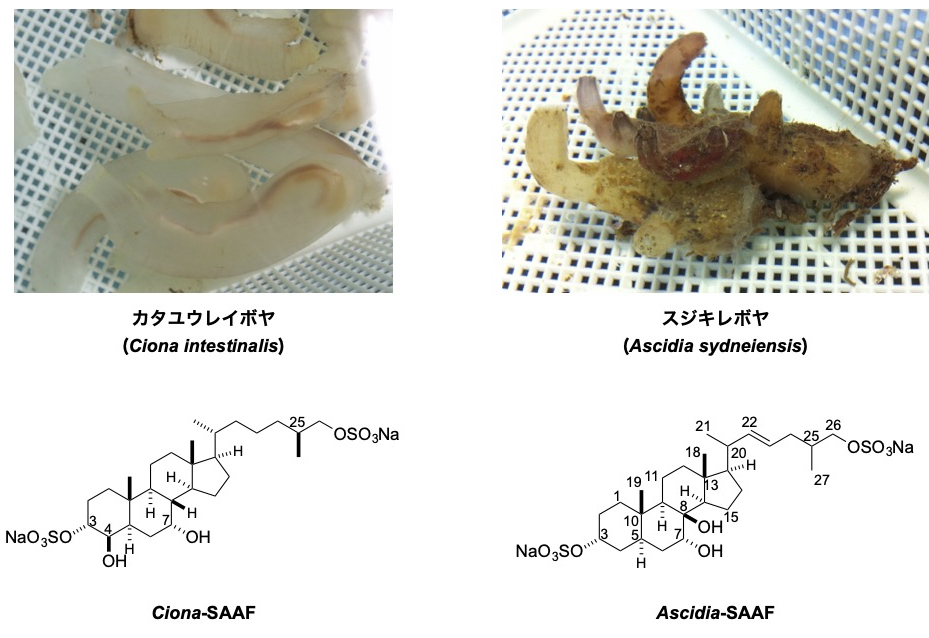
6. Regulatory Mechanism of Fertility in Mammalian Sperm (Dr. Yoshida) For more information, click here.
In general, mammalian spermatozoa do not have the ability to fertilize immediately after ejaculation, but they acquire their fertility during the process in the female reproductive tract, and can penetrate the zona pellucida and contact the oocyte after the acrosome reaction. We have shown that SVS2, a mouse seminal vesicle secretory protein, regulates the state of sperm fertility, and delivers sperm to the oviducal ampulla, where oocytes are waiting. Currently, we are trying to analyze the molecular mechanism of sperm capacitation. We are also investigating whether the peptide fragment of SEMG/SVS2 can be used as a sperm protective agent in the treatment of male infertility.
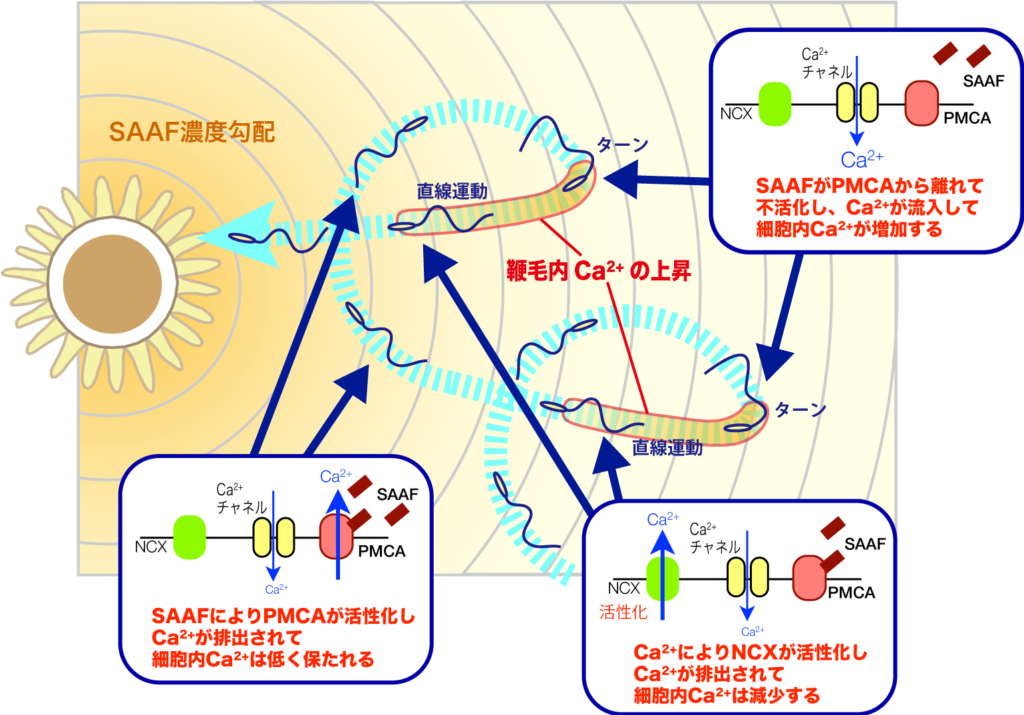
7. Studies on Development and Evolution using Teleosts (Dr. Kurokawa) For more information, click here.
We are studying the development and evolution of vertebrates, focusing on the following two topics.
(1) The molecular mechanism of vertebrate developmental arrest and how it was acquired in the process of evolution using an annual killifish (Nothobranchius korthausae) inhabiting East Africa.
(2) The function of genes involved in vertebrate head development using grass puffers (Takifugu alboplumbeus) that spawn in groups on the Araihama beach near the Misaki Marine Biological Station.
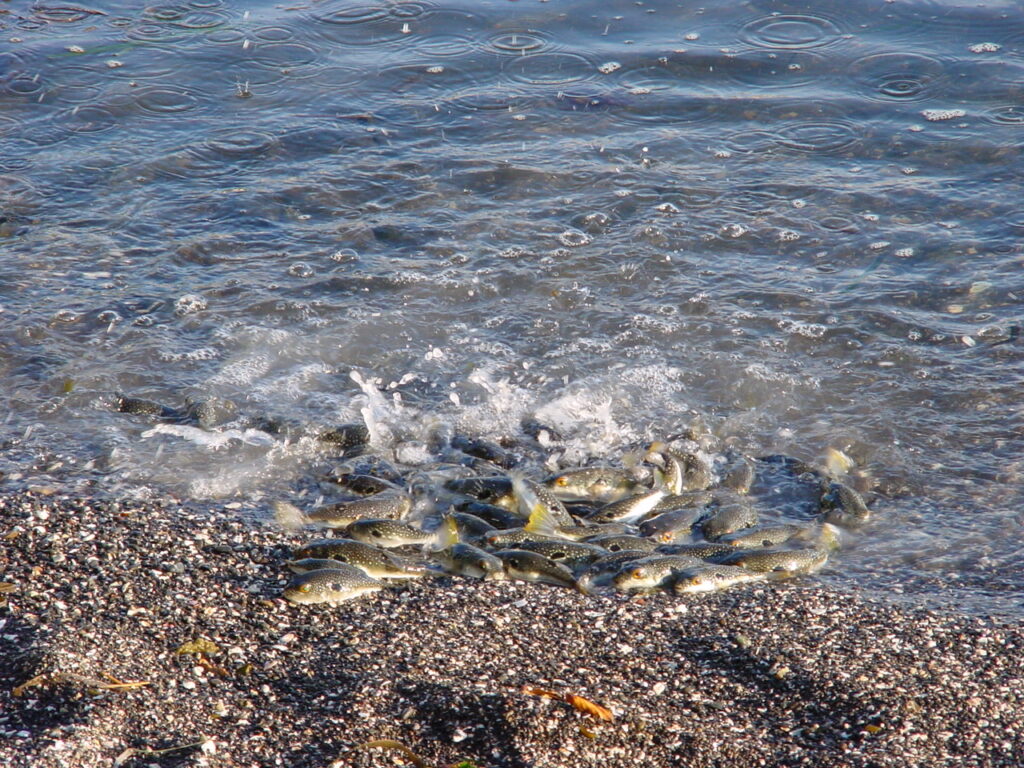
8. Colony Formation Mechanism of Siphonophore (Dr. Oguchi) For more information, click here.
Sophisticated colonies in eusocial and colonial animals are called “super-organisms” because they are composed of many individuals but behave cooperatively as if they were a single organism. Among them, Siphonophore (Cnidaria: Hydrozoa) is one of the most representative examples of “super-organism”, formed by arranging individuals with specialized morphology and functions in the right places. The formation of such colonies requires mechanisms that allow individuals with different roles to be placed in the right places, but the mechanisms underlying such colony formation are not fully understood. By observing the developmental processes and using gene expression and functional analysis, we are investigating the differentiation mechanism within the siphonophore colony formation.
